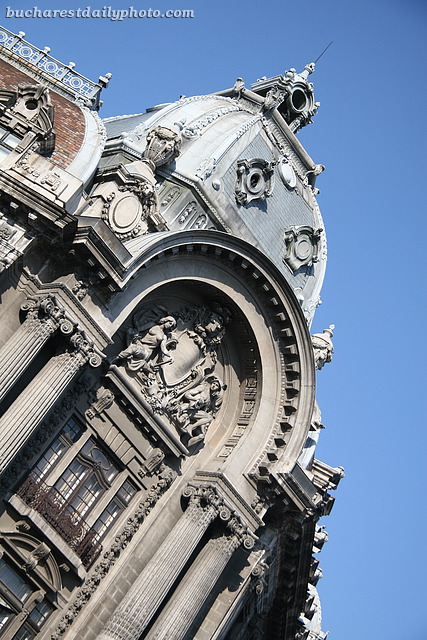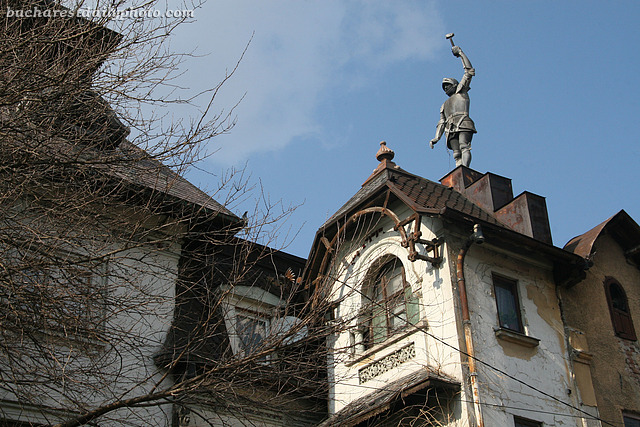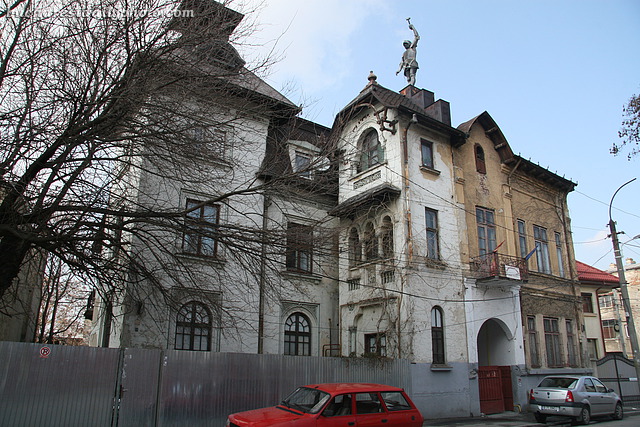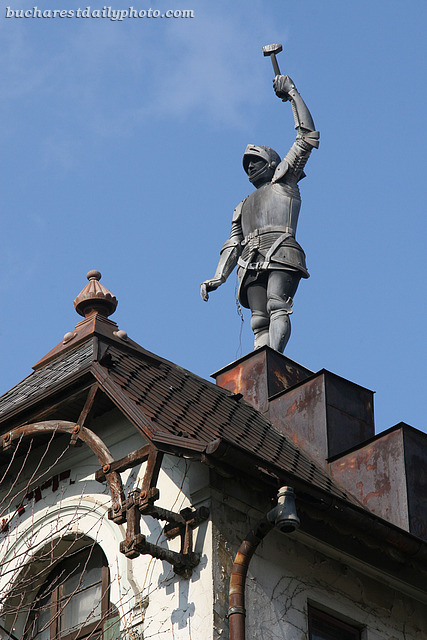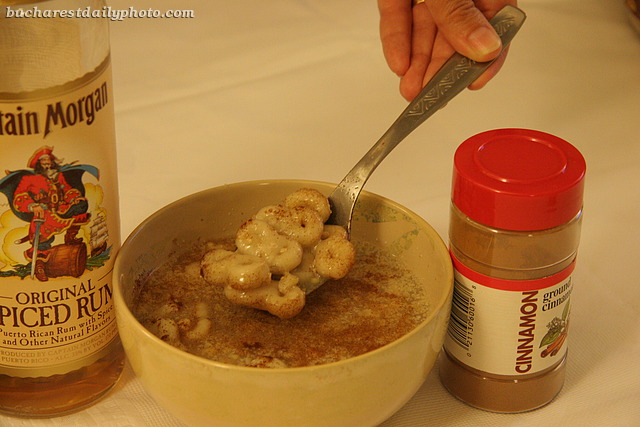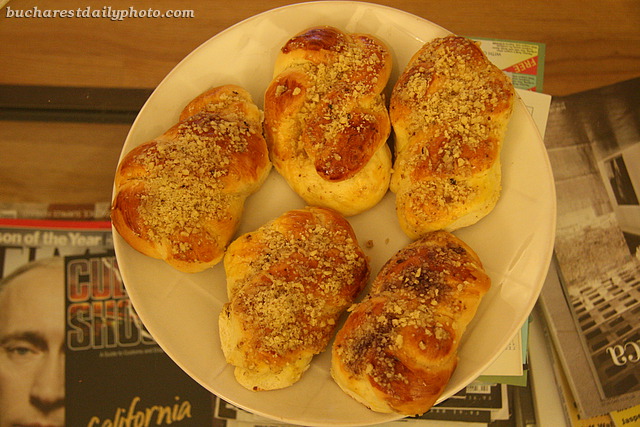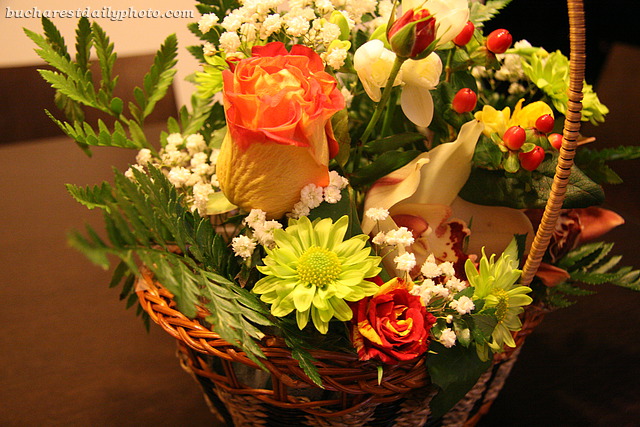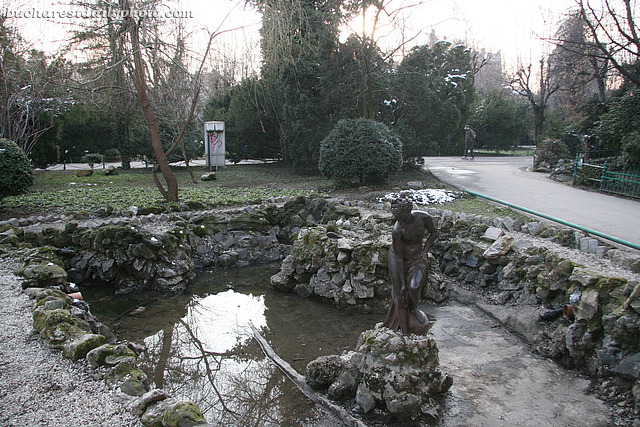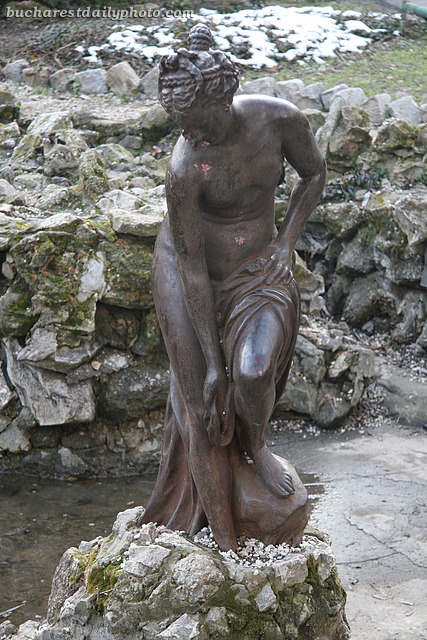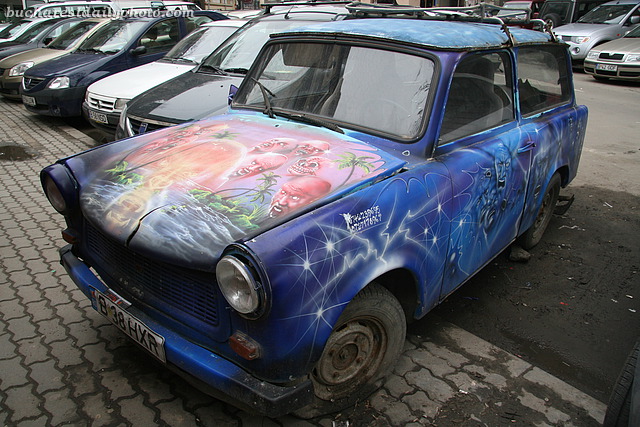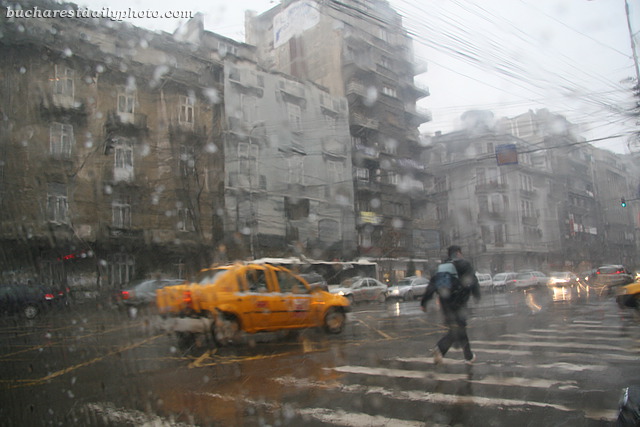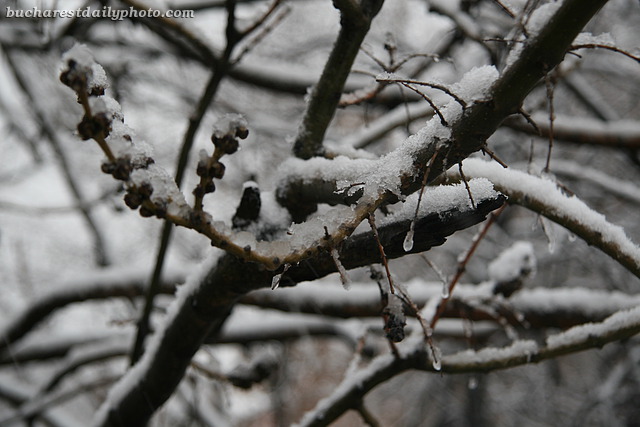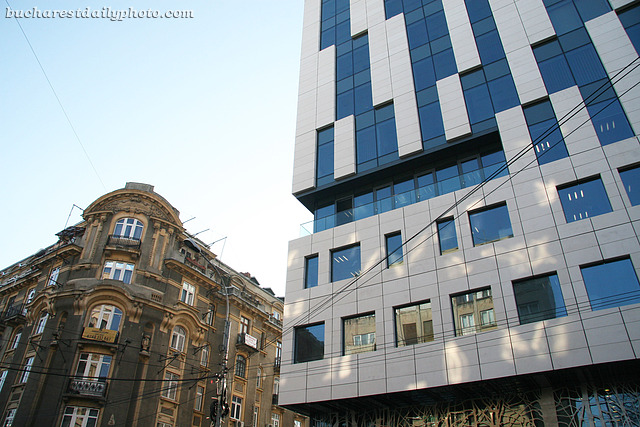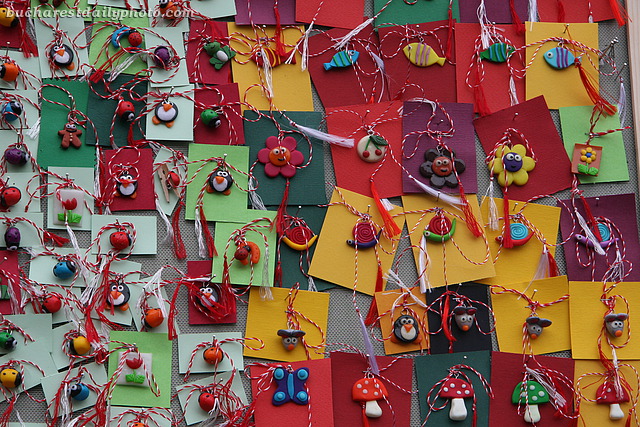Today, the City Daily Photo blogging community pays tribute to Eric Tenin of Paris Daily Photo. Five years ago, on March 11th 2005, Eric started his daily photo blog of Paris and he’s been blogging ever since without missing one day. It was his blog that I found last summer while researching for a trip to Paris, and that inspired me to create this photo blog of my home city. To celebrate his 5th anniversary and honor Eric, the suggestion for today’s theme was to use one of his photographic techniques, be it the placing of the camera on the ground to make an image, or of skewing/tilting the composition. Click here to view thumbnails for all participants
The photograph shows the building which now holds the National Library of Romania and which before 1955 used to be the Palace of Stock Exchange. It was built in French Neoclassical style, between the years 1906 and 1911, after plans by architect Ştefan Burcuş.
